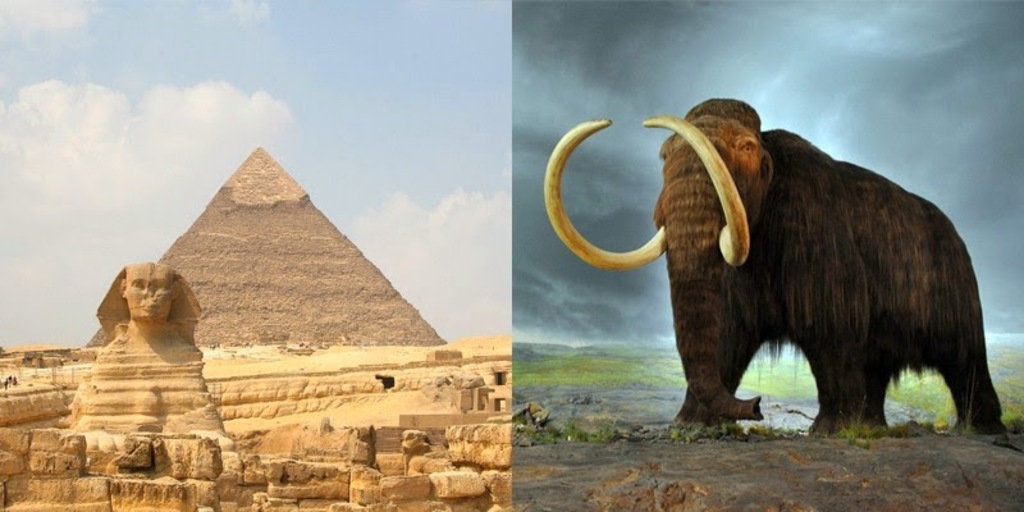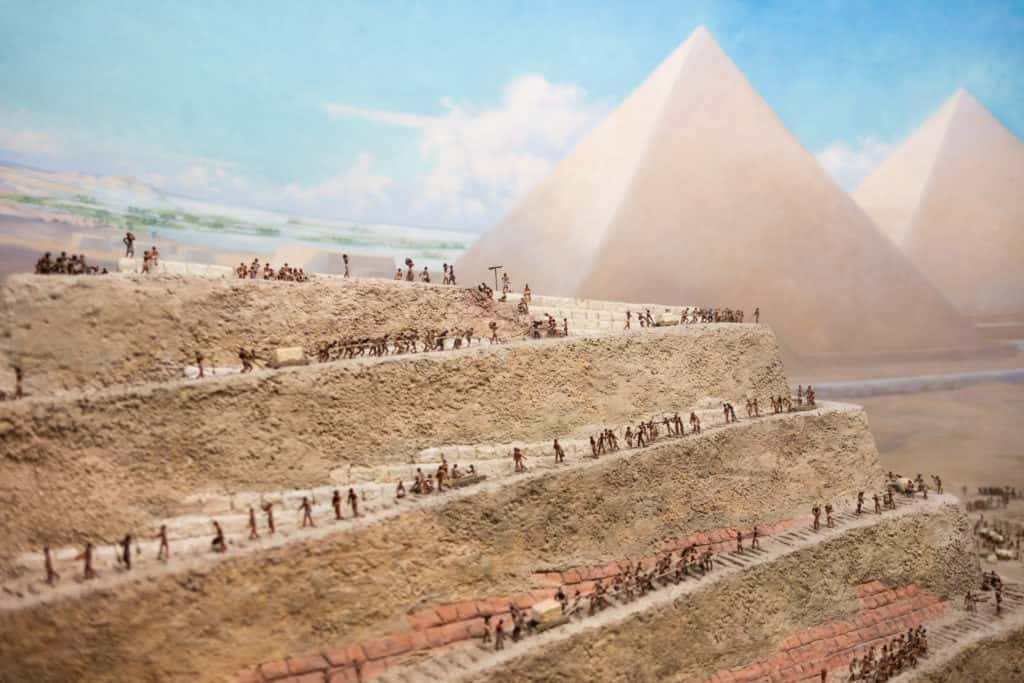The great pyramid was built before the last woolly mammoth died

The Great Pyramid was built before the last Woolly Mammoth died.


The Great Pyramid of Giza stands as one of the most remarkable architectural achievements in human history. Built as a tomb for the Egyptian pharaoh Khufu, it has fascinated scholars and historians for centuries. However, what many people may not realize is that this ancient wonder predates the extinction of the Woolly Mammoth, a fascinating creature that roamed parts of the Earth during the Ice Age.
According to research and archaeological evidence, the construction of the Great Pyramid dates back to around 2560 BCE. This means that it was built approximately 4,560 years ago. On the other hand, the last Woolly Mammoths are believed to have died out around 4,000 years ago, making the timing intriguingly close.
During the time of the Great Pyramid’s construction, Woolly Mammoths still roamed parts of what is now modern-day Russia, Alaska, and Canada. These majestic beasts, with their long, curved tusks and shaggy coats, coexisted with ancient civilizations like the Egyptians.
The Great Pyramid was an astonishing feat of engineering, taking an estimated 20 years to complete. It stands at a height of 455 feet (138 meters) and was originally covered in smooth white limestone, reflecting the sun’s rays and appearing as a radiant beacon in the desert landscape.
So, how does the existence of Woolly Mammoths connect to the construction of the Great Pyramid? While there is no direct evidence that links the two, the parallel timelines invite speculation and awe. It’s intriguing to think that while Ancient Egyptians were laboring to construct this massive structure, Woolly Mammoths were still wandering across the vast frozen lands.
To further emphasize this connection, it is fascinating to consider the number of other events and phenomena that simultaneously occurred in different parts of the world during this period. It marks a time when our history intertwines with the natural world, creating an intersection between human achievements and the existence of magnificent creatures.
Though the exact reasons for the Woolly Mammoth’s extinction remain unclear, factors such as climate change and overhunting by early humans are believed to have contributed to their demise. As they slowly disappeared from the Earth, the Great Pyramid remained, a testament to human ingenuity and the legacy of ancient civilizations.
While our understanding of the relationship between the construction of the Great Pyramid and the last Woolly Mammoth’s existence may forever be speculative, the fact that the two events occurred within a relatively close timeframe is a captivating reminder of the rich tapestry that weaves through our world’s history.
(Source: World Atlas)
Related Posts
Quick Links
Legal Stuff

